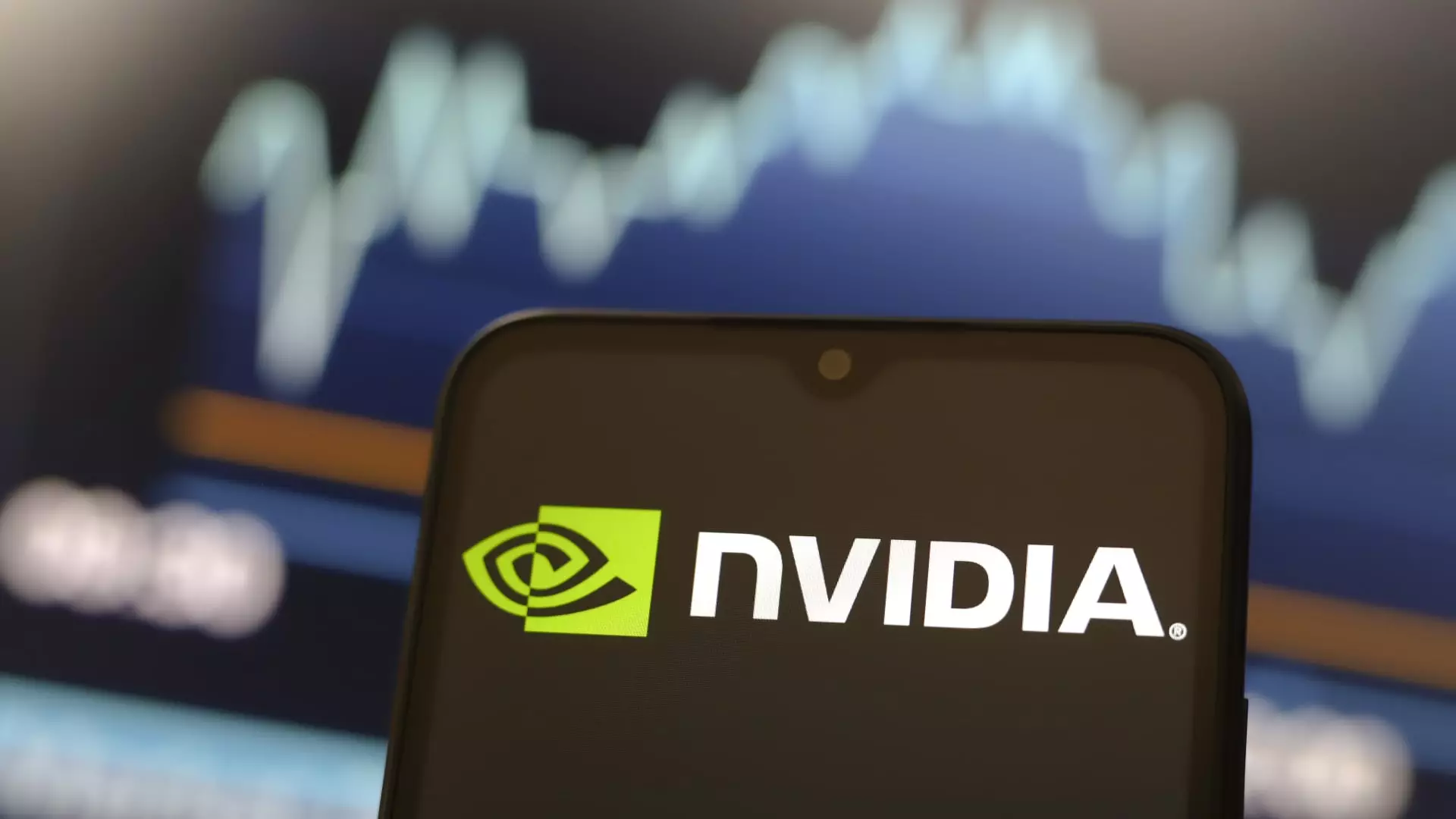Nvidia, once viewed as the frontrunner in the booming sector of artificial intelligence chips, has recently seen its stock values decline significantly. Despite the broader Nasdaq Composite achieving record levels, Nvidia shares fell into correction territory, down approximately 11% from their peak of $148.88 recorded last month. As of December, the stock has plummeted 4.5%, raising eyebrows among investors who closely track the trajectory of the AI chip manufacturer. This shift is intriguing, especially in light of Nvidia’s impressive 166% rally over the course of the year, highlighting the volatility that can occur even for market leaders in fast-evolving industries.
The concept of a market correction often presents discrepancies in definitions, but a drop of 10% from all-time highs is widely accepted. Nvidia’s current struggles may indicate a deeper trend, suggesting potential profit-taking behavior amongst investors who have benefitted from the company’s prior performance. When strong stocks begin to face challenges, it typically indicates shifts in market sentiment that could resonate across various sectors — a notion that requires further examination.
Keith Lerner, co-chief investment officer at Truist, emphasized the necessity of Nvidia’s chips for the foundational infrastructure supporting AI advancements. Despite its critical role, there appears to be a noticeable shift as investors look beyond Nvidia towards other digital powerhouses. In a market characterized by the “Magnificent Seven” — a term describing top-performing tech firms — observers may be witnessing a rotation of interest. Such rotations, occurring multiple times throughout the year, can significantly impact stock performances when investors seek diversification or are simply searching for more lucrative opportunities.
This latter point cannot be dismissed lightly. The momentum driving the semiconductor sector can be a double-edged sword. As Nvidia encounters headwinds, stocks from rivals like Broadcom surged to new heights, rising about 11% in a single session. Broadcom’s robust earnings report has fueled investor enthusiasm, driving a wave of buying activity that showcases a clear shift in focus from Nvidia to other potential high-growth companies. The market’s resilience amid Nvidia’s difficulties could illustrate the ever-changing landscape of technology investments, where fortunes can quickly shift.
Nvidia’s underperformance stands in striking contrast to the favorable conditions for other semiconductor stocks. Companies like Micron Technology, Marvell Technology, and Lam Research all posted significant gains on the same day Nvidia struggled. Micron Technology, for instance, surged by nearly 6% ahead of its upcoming financial results, indicating strong investor anticipation. Similarly, Marvell Technology and Lam Research recorded upsides of 3% and 2%, respectively, showcasing an environment where investor appetite remains robust for other players in the tech field.
These trends beg the question of whether Nvidia can regain its standing amidst this changing landscape or if it will cede ground to its competitors in the semiconductor space. Such dynamics are critical to observe, as they not only affect individual stocks but also reflect broader market perceptions and investor preferences.
As Nvidia dictates a significant portion of the AI sector’s narrative, its recent downturn represents not merely company-specific issues but pervasive market implications. Investors and analysts alike are closely watching as the stock hovers around $125 to $130, which Roth MKM identified as an essential testing point that could indicate broader market health.
Should Nvidia continue its slide, it may prompt further examination of other tech stocks and possibly indicate a larger shift in market dynamics towards companies that can sustainably harness the momentum or growth potential currently available. Yet history teaches that swift changes in investor sentiment can sometimes be fleeting, making it essential to keep a measured perspective.
Overall, the evolving landscape of artificial intelligence and semiconductor technology makes room for uncertainty, and the tides can turn rapidly. As Nvidia’s narrative develops, the intertwining fortunes of tech companies will undoubtedly dictate investment strategies, affecting market movements as they strive to adapt to an ever-changing industry.

